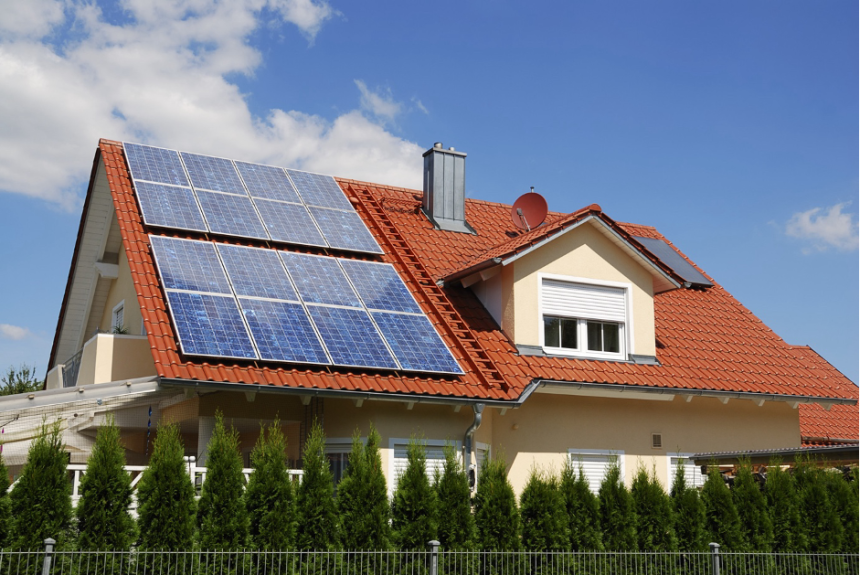The solar installation process is incredibly quick and efficient. Here’s a quick look at the process so that you can plan your switch to solar.
It’s common to hear more people going solar, especially after a more traditional winter season. People are no longer hesitant to switch to solar because the government made it more affordable by increasing rebates. For many people, it’s easier than ever to go solar.
However, there is a solar installation process that potential customers need to be aware of. You need to understand how this can impact your home before making a final decision.
What are some things you should keep in mind about solar installation before choosing to make the change?
Find out everything you should know about solar installation by reading this guide today!
Preparation
The solar installation process begins with preparation. Before beginning the installation, research your local solar laws and regulations to make sure your solar project is permitted.
Obtain local permits and installers must review the architecture and electrical systems at the proposed installation site in order to make sure the system is being installed properly and safely. Additionally, the wiring diagrams of the solar array and the home must be examined to make sure a successful installation will occur.
Lastly, it is important to make sure that the batteries and inverters are compatible with the solar panel. Depending on the state, local solar installers may be required to be certified and be given the proper permissions to begin the installation.
By doing this, solar customers can rest assured that their solar system is operating at its maximum efficiency. You can also check here to experience cleaner air with a custom rooftop solar installation!
Selecting and Installing Panels
Selecting and installing solar panels are the two most important steps of this process. The selection process should take into account factors like the quality and efficiency of the available panels, as well as the estimated energy savings that the panels can offer.
Furthermore, prior to installation, one should research any solar incentive or financing options that can help with the project costs. When it comes to installation, between planning and discussion, professional installation, and compliance with specific requirements.
It is recommended to engage with a qualified professional who can help ensure safe, cost-effective, and efficient installation. All in all, thorough research, evaluation, and planning are the keys to successful solar panel installation.
Connecting the Solar System
The process of connecting a solar system to a home or business involves several complex steps that must be completed before the system is fully functional. The first step is to design and install the solar array, which consists of solar panels and associated wiring.
Next, the wiring for the solar array must be carefully connected to the power inverter and with proper grounding to ensure the safe operation of the system. Lastly, the solar array must be connected to the grid in order to power the premises.
Depending on the location, this may involve getting special permits from the local government or utility companies. With all the steps followed correctly, the solar system can now be utilized to produce clean, renewable energy for the premises.
Testing and Troubleshooting
After the solar panels are installed and connected to an inverter, a technician will usually inspect the system’s functionality to ensure it is working properly and operating efficiently.
This can involve testing the voltages and currents, performing infrared scans and visual inspections on the solar modules, checking and verifying that the AC power is being properly distributed, and reporting on any issues they encounter.
To ensure the quality and reliability of the system, installers test and inspect every aspect of the installation, including wiring, conduits, mechanical fastenings, groundings, and other associated components.
Additionally, because solar systems are exposed to the natural environment, observations regarding the integrity of the exterior components are made to ensure they are not adversely affected by low temperatures, extreme conditions, or other hazards.
Maintenance and Monitoring
The solar installation process is a complex one that involves diligent maintenance and monitoring. After the panels, inverter and mounting structure have been successfully installed, essential maintenance and monitoring must be done to ensure your solar system is running properly and your investment is protected.
Regular inspections should be performed to spot and repair damage from the elements, and debris should be removed from the panel surfaces as needed. Additionally, any plants around the solar panels should be carefully trimmed to prevent shading.
With a quality inverter and monitoring system, data from your panels should be available for you to analyze in order to check on performance and identify any irregularities. Over time, it may be necessary to check for additional shading issues as trees and other vegetation grow, and you may even need to adjust your mountings or shift your panel orientation in order to ensure optimal efficiency.
Cost Calculation
Cost calculation is an important element of the solar installation process. The initial cost of the solar system is determined by several factors, including system size and type, building size and type, local incentives, and labor costs.
A professional solar installer can help you determine the most cost-effective option based on your goals and the available incentives. The installer will also help you calculate the estimated system payback for the solar installation, which is the amount of time before your system will produce more energy than it costs to install.
The cost savings from the system will likely help offset the initial investment over time. Additionally, the incentive structure at the time of installation can help further reduce the cost burden of a solar system.
When considering a solar installation, it’s important to do your research and discuss options with a professional solar installer to ensure the most economical and efficient system.
Learn More About the Solar Installation Process Now
Overall, the solar installation process is not long or difficult. Both individuals and businesses can make the switch to clean energy quickly and efficiently.
Now that you’ve learned about the solar installation process, it’s time to take action and make the trusted switch to solar energy today!
Did you find this article helpful? Check out more of our blogs!
Lynn Martelli is an editor at Readability. She received her MFA in Creative Writing from Antioch University and has worked as an editor for over 10 years. Lynn has edited a wide variety of books, including fiction, non-fiction, memoirs, and more. In her free time, Lynn enjoys reading, writing, and spending time with her family and friends.















